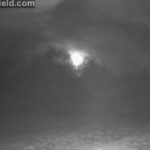In this new feature, we examine in more detail the wide diversity of plant, animal and insect life to be found in the Tufa Field.
We start with a plant familiar to some as the Butterfly Bush, or Buddleia Davidii.
Why this plant and not any of the myriad of other wild life in the Tufa Field?
When the field was ravaged by the forest mulcher in 2020, and the subsequent digging of trenches for the reptile fence, the damaged land was left with bare rough soil, and clear patches of vegetation-free land.
These are ideal conditions for the generation of Buddleia.

Buddleia is known as an Early Adopter. This is where species are particularly adapted to conditions which other plants or animals would find inhospitable, and unable to thrive or even survive. Originally an ‘escaped’ introduction from China, the plant is now ubiquitous in the UK.
Look on any ‘waste’ site , perhaps cleared industrial land or demolished buildings, and you will inevitably find Buudleia Davidii. Its seedlings are able to thrive with very little organic matter such as humus or soil by developing roots that can force themselves into cracks and fissures, searching and finding moisture and meagre mineral nutrients. In a very short time, the bushes grow large. But Buddleia are deciduous, i.e. they drop their leaves in winter and this is where the miracle starts to happen. Spent Buddleia foliage quickly breaks down, decaying to produce the organic matter that forms the basis of soil.
Other plants that would otherwise not be able to survive, can then use this soil to establish themselves, in turn casting vegetable matter that decays, producing more soil and so the cycle continues.
New species are attracted, both plant and animal, to the new food and shelter source thus created.
So successful is this process, that within a few years, derelict sites are transformed into wildlife havens with bird life, insects, and even wild flowers.
As an added bonus, the Buddleia flowers produce copious quantities of nectar that are particularly attractive to Butterflies and Moths, hence the name Butterfly bush.

Without interference, Buddleia bushes can grow quickly and become very large.
As an example of natural rewilding, this plant shows what can happen if Nature is left to itself.
The Tufa Field supports a huge variety of wildlife and species continue to proliferate, giving the biodiversity needed to compensate for losses in the built environment. As always, the Tufa Field demonstrates it’s value to the locality and the wider area as a source of much-needed green space in Bath.














 Total views : 100658
Total views : 100658

Leave a Reply